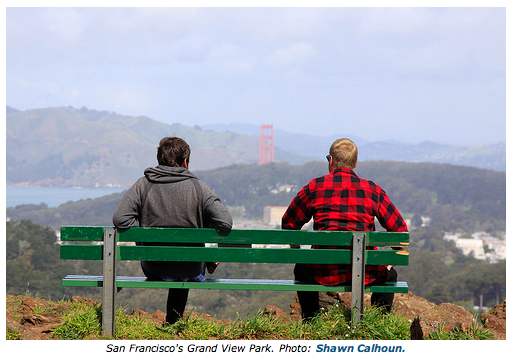Okay, so—in a follow up to our last post—here are some critics’ choices for the US of A’s best public spaces. The article quoted is from Planetizen, a wonderful clearinghouse-style site of urban-themed articles. Do you agree with the critics? Disagree? Any nominees for notable snubs? Could any of their picks offer inspiration that might take root in Sarasota?
For the past few weeks, we’ve been asking you to help us crowdsource the Top 100 Public Spaces in the U.S. and Canada, in collaboration with Project for Public Spaces. For a different perspective, we asked some top architecture critics and practitioners to give us their favorites.
If you still haven’t voted, head on over to IdeaScale and give us your suggestions. Voting is getting competitive, with Seattle’s Cal Anderson Park currently topping the list.
It has been a fascinating experiment so far, attracting some of the expected responses (The High Line, Millennium Park, Bryant Park) and some less so (The Circle in Normal, Illinois). For me, it’s been a revelation to read about the many beloved plazas and parks I’ve yet to visit.
While crowdsourcing has its benefits, it is also useful to talk to people who’s business is to think about cities and architecture. I asked a handful of architecture critics, urban designers and architects to give us their bests.
James S. Russell, architecture critic for Bloomberg News and recently the author of The Agile City: Building Well-being and Wealth in an Era of Climate Change
, was kind enough to send us his Top 10:
James S. Russell’s Top 10
- High Line Park, NYC
- Central Park, NYC
- Olympic Sculpture Park, Seattle
- University of Washington campus, Seattle
- Benjamin Franklin Parkway, Philadelphia
- Millennium Park, Chicago
- Stanley Park, Vancouver BC
- Moore Sculpture Garden (Nelson Atkins Museum), Kansas City
- Back Bay Fens, Boston
- Times Square, NYC
John King is urban design critic for the San Francisco Chronicle, and he also has a new book out,Cityscapes: San Francisco and its Buildings
. Rather than a top 10 list, John sent us this reflection on his favorite places:
For San Francisco, the one I thought of instantly is one that outsiders don’t known: Grand View Park. It’s on the west side of the city, a steep bare hillock surrounded by prim single-family homes, and it delivers exactly what it promises: a grand perspective on the remarkable setting that is essential to San Francisco’s sense of place.In Boston, where I lived seven years, what comes to mind is Boston Public Garden. You enter and you have stepped out of time, a sensation felt often in The Hub. And yet it’s centrally located, very much part of the daily ebb and flow, timeless yet integral to the city of today.
New York? What else but the High Line. Deride it as monied or mannered or a developers’ boon in hip veneer, it is mesmerizing and exhilarating at once — a reminder that the principles of urban design should never be considered set. Because new layers and the unexpected are part of the change that cities are all about.
Finally, in Portland, Tanner Springs Park. Again, people I respect consider the Atelier Dreiseitl design to be mannered. I love how it embodies the uniquely sustainable ethos that shapes this Northwest city more and more, year after after year.
Inga Saffron is the Philadelphia Inquirer’s architecture critic, and currently a Loeb Fellow at Harvard’s Graduate School of Design, provided us with this list of her picks:
Inga Saffron’s Top 10
- Rittenhouse Square, Philadelphia
- Central Park, New York
- High Line, New York
- Emerald Necklace, Boston
- Millennium Park, Chicago
- Olympic Sculpture Park, Seattle
- Bryant Park, New York
- Stanley Park, Vancouver
- The Lachine Canal Bike Path, Montreal
- National Mall, Washington D.C.
For pictures, more lists, and more discussion check out the original article at planetizen.

